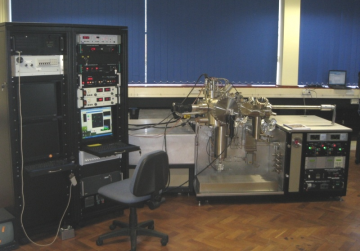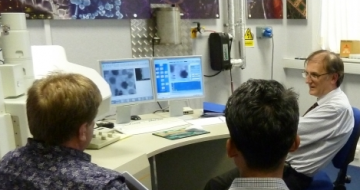Research in the Department has had impact from modelling of solar cell performance in support of a university spin-out to solving manufacturing problems for major aerospace companies and influencing industrial processing practices in the UK and internationally.
Below are two case studies showing how research from the Department of Materials has contributed to the wider UK economy.
Developing the three dimensional atom probe

three dimensional atom probe
Research in the Deparment of Materials has led to major advances in the technique of Atom Probe microanalysis. The Department pioneered the concept of position sensitive detectors for Atom Probe instruments, generated the first 3D data and built the first prototype instruments. Following a series of patented advances and the formation of a spin-off company (subsequently incorporated into Ametek), research in the Department has led directly to the sale of 45 Local Electrode Atom Probe (LEAP) instruments since 2008 with a value of $102M. These instruments have been used to provide atomic scale chemical information vital to the design of new commercial alloys and to safety cases for life extension of nuclear power plants.
More details are available in  REF2014 impact statement .
REF2014 impact statement .
Trace evidence analysis for Orchid Cellmark Europe Ltd

Gunshot residue analysis
Material characterisation research by Oxford Materials Characterisation Service in the Department of Materials has helped Orchid Cellmark Europe Ltd (Cellmark) to deliver forensic services to 85% of the police forces in England and Wales. The work of the Department has helped Cellmark to participate successfully in National Forensic Framework tendering exercises and to double their market share. The work of the Department in partnership with Cellmark has been accredited by the UK Accreditation Service and the Department now provides an average of 360 forensic glass analyses and 60 gunshot residue analyses to Cellmark each year. These analyses have secured, amongst others, convictions for perpetrators of serious gun crime.
More details are available in  REF2014 impact statement.
REF2014 impact statement.